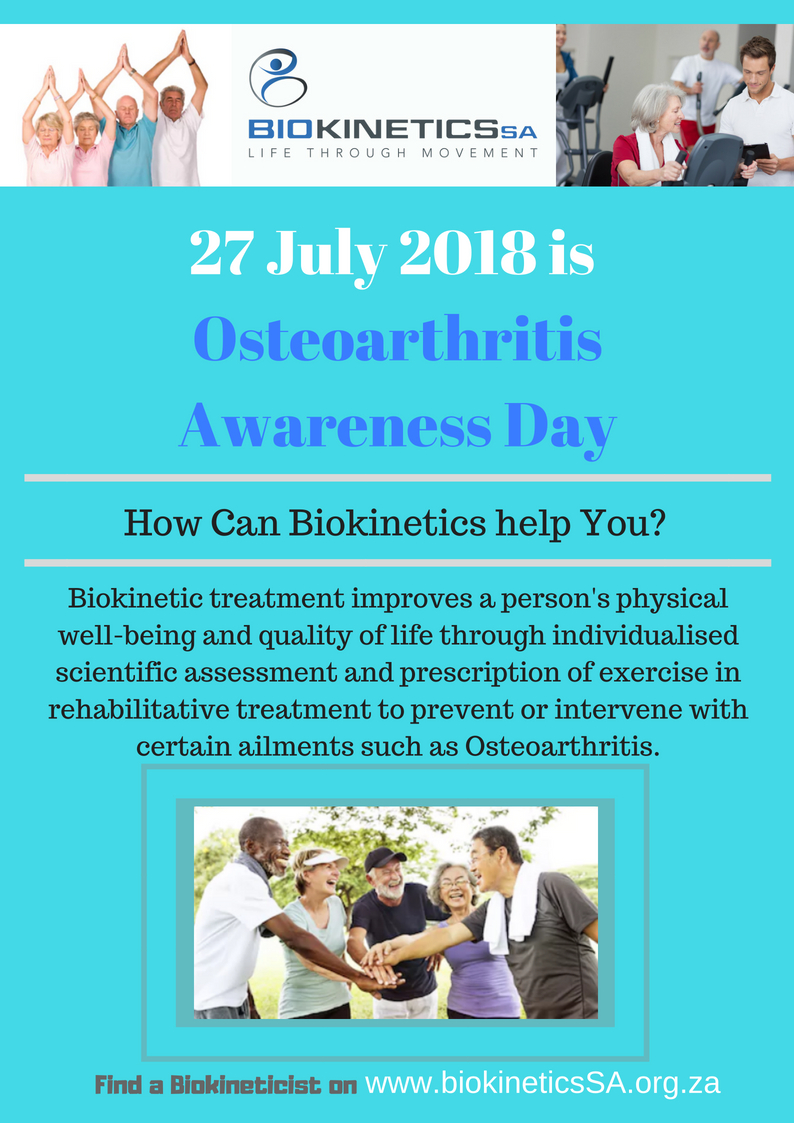Two common forms of arthritis exist, namely
osteoarthritis and rheumatoid arthritis. Osteoarthritis is a degenerative joint
disease in which the cartilage of a specific joint degenerates, resulting in
localized pain and inflammation within that joint. The most common joints
affected by osteoarthritis are the hands, spine, hips and knees. Rheumatoid
arthritis is an inflammatory, multi-joint disease in which numerous joints and
organ systems may be affected as a result of an autoimmune response. The most
commonly affected joints include the wrists, hands, knees, feet and neck.
When exercising a person with
osteoarthritis, one needs to consider the degree of articular cartilage
degeneration in the specific joint, the level of pain and discomfort in that
joint, the range of motion of the joint, the strength of the surrounding
muscles of the affected joint, and finally, whether or not the individual is
having a flare up. Osteoarthritis will periodically flare up and then may
almost go into remission. During a flare up, pain will be much more severe. Common
features associated with exercise include joint pain and stiffness, osteophytes
(small bony formations) and cartilage destruction. It is important to
strengthen the muscles surrounding the affected joints so that they can support
those joints. However, these exercises must be performed carefully, placing
minimal stress and impact on those joints. It is also essential to stretch the
muscles surrounding the affected joints in order to maintain their range of
motion and reduce joint stiffness.
When selecting exercises for individuals
with rheumatoid arthritis, you need to know if the individual is having a flare
up – increased pain will be the primary symptom. Common features associated
with rheumatoid arthritis include morning stiffness that lasts longer than 30
minutes, acute and chronic inflammation, chronic pain and reduced joint
integrity. Low-intensity and low-impact exercises, with lots of stretching, are
recommended for these individuals.
For any form of arthritis, it is important
that individuals do regular low-impact, aerobic exercise, such as swimming or
cycling, and lots of stretching. Any exercises that place heavy stress on the
affected joints should be avoided. During flare ups, vigorous exercise must be
avoided. Water therapy and water aerobics are highly recommended for
individuals who suffer from arthritis.
